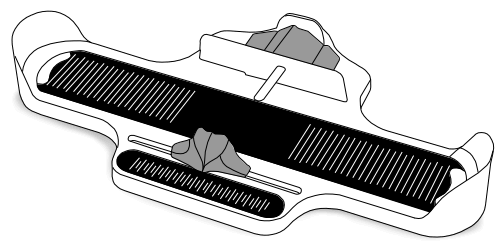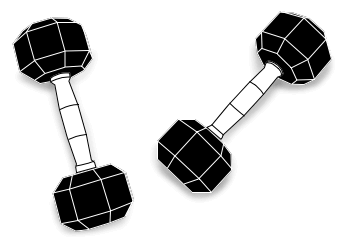There’s an inherent joy in purchasing a new pair of leather shoes. You open up the box, peel back the tissue paper and unsheathe your new lace-ups from their fuzzy shoebags. You hold them in the light, and notice the fine craftsmanship—the intricate stitching, the smoothness of the leather and the unblemished footbed inside. You can smell the leather, can't you? It's all good until you try to wear them for the first time.

That gleaming leather you were just admiring suddenly feels a lot less forgiving. Your toes are pinched a bit and your heel is being rubbed raw. Then come the blisters. What the hell? The truth is, that if acquiring a new pair of shoes is among life's great pleasures, then the act of breaking them in is one of its greatest pains. Think of it this way, your new shoe is a wild stallion—beautiful and a little dangerous until it's tamed. To make it your own will require some work (and maybe some blood, sweat and tears), but then you'll be incredibly comfortable in the saddle. Don't be discouraged. In fact, it's a rite of passage every man should endure.
And while there are a handful of bizarre shortcuts and hacks floating around the internet, don't fall for them. You should not be running over your shoes with your car, or stashing them in the freezer with plastic bags filled with water. Thankfully, the real process is a lot more straightforward. So pull out your new shoes and let's get to work. Because as soon as they're broken in, you'll have a pair that you'll be happily wearing for the next decade or so. You might not know this, but breaking in your shoes properly will actually extend their lifecycle. The process of gradually introducing stress to the materials allows them to adapt without experiencing excessive wear and tear. This means that your shoes are more likely to withstand the test of time and maintain their structural integrity, ultimately saving you money in the long run. And don't worry, the process is way less involved than you might expect.
Advertisement

Make Sure the
Size Is Right
Every footwear manufacturer and factory is a little different, so as much as you think you might be a solid 10.5, you'd be surprised how often you need to go up or down a whole size, sometimes even more. Make sure that when you try on a shoe, it feels comfortable right out of the gate. It can be stiff or a little snug, but it shouldn't be uncomfortable. Once you've zeroed in on the right size, the real process begins.
Start Small
We know you want to show them off, but this is a ritual that you shouldn't rush. Savor this time, because this is where you really bond with the shoes and let them mold to your foot's natural shape. First, wear your new shoes for 30 minutes inside, walking around in the afternoon or evening when your feet are the most swollen. The next day, wear your shoes for 60 minutes inside and outside. If your shoes are particularly tight—especially dress shoes—you can wear thick hiking socks to stretch them out further. On the third day, wear your shoes for two hours (indoors or outdoors). Repeat this final step as needed until they fit well. With each wear, the leather slowly stretches, and the insole softens, allowing the shoe to take on a truly personalized fit. Trust us, the end result will be worth the effort you put in.
Advertisement

Introduce Some Heat
Heat can be an effective tool to help loosen up your leather. Take your blow-dryer and using medium heat, aim it about 10 inches away from your leather or suede shoes to soften them slightly. This will make it easier to mold the shoes to the shape of your foot. Focus the heat on the area that feels tight. Repeat as necessary. Wear your shoes immediately after blow-drying so they stretch and mold to the shape of your foot.
Then Add Some Hydration
The oils and tannins pumped into leather often make it stiff and durable, but the more you wear a shoe, those oils break up and the leather loosens up. You can also accelerate that process with products like a good leather balm, which helps to moisturize your shoes, making them more pliable. Shoe snobs swear by Saphir's cream conditioner, which really penetrates the leather to moisten it and break up the tannins. By conditioning the leather, you're softening it up and accelerating the break-in process.
Even Sneakers
Need It Sometimes

Athletes can benefit significantly from breaking in their sneakers. Wearing them in before engaging in intense physical activities helps the shoes conform to the movements of your feet. This ensures better performance and reduces the risk of discomfort or injury during sports and workouts.
Advertisement
































